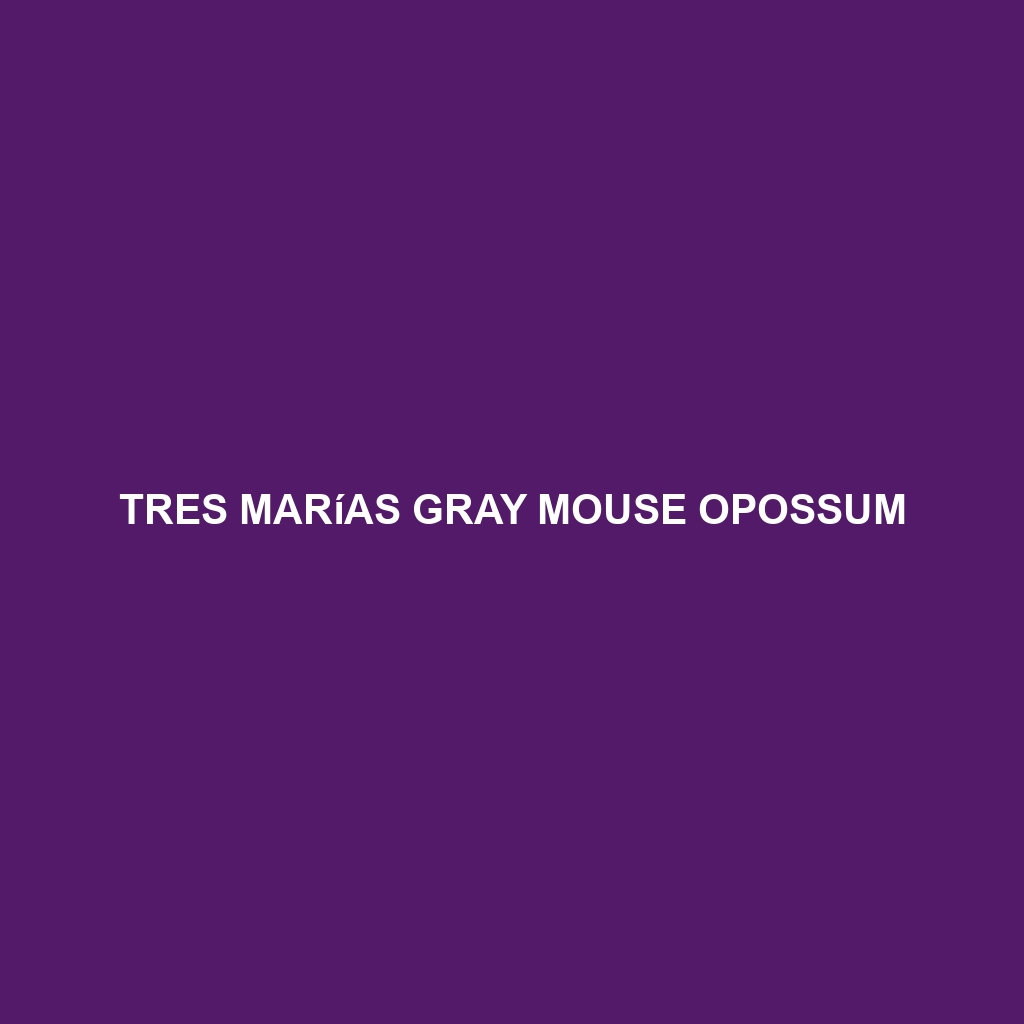Tres Marías Gray Mouse Opossum: A Detailed Description
The Tres Marías Gray Mouse Opossum (Tlacuatzin insularis) is a small, nocturnal marsupial endemic to the Tres Marías Islands off the coast of Nayarit, Mexico. Despite its diminutive size, this intriguing creature plays a vital role in its ecosystem. Characterized by its agile movements and distinctive appearance, the Tres Marías Gray Mouse Opossum is a remarkable example of island adaptation and biodiversity.
Physical Characteristics:
Size: This opossum is relatively small, with an average body length of 10-15 cm (4-6 inches) and a tail length that can be approximately the same. Adults typically weigh between 20-30 grams (0.7-1 ounce).
Coloration: Its fur is primarily a soft gray, with a slightly lighter underside. The fur is dense and fine, providing good insulation. The ears are large, rounded, and almost hairless, adding to its characteristic look.
Special Features: One of the most notable features is its prehensile tail, which it uses for balance and grasping branches, aiding in its arboreal lifestyle. Its sharp claws and dexterous forelimbs make it an adept climber.
Behavior:
Social Interactions: The Tres Marías Gray Mouse Opossum is generally solitary. Interactions between individuals are limited to the breeding season. They communicate through a series of vocalizations and scent markings.
Feeding Habits: This opossum is omnivorous, with a diet consisting of fruits, insects, small vertebrates, and occasionally eggs. It has a keen sense of smell, which it uses to locate food during its nocturnal foraging.
Ecological Role: As both a predator and prey, the Tres Marías Gray Mouse Opossum plays a vital role in controlling insect populations and providing food for larger predators. Its foraging habits also aid in seed dispersal, contributing to the health of its habitat.
Habitat:
Natural Habitat: The Tres Marías Gray Mouse Opossum inhabits the tropical forests and shrublands of the Tres Marías Islands. It prefers dense, moist areas with ample tree cover, which provide shelter and food sources.
Adaptations: Adapted to island life, this opossum has developed behaviors and physical traits that enable it to thrive in a relatively isolated and resource-scarce environment. Its prehensile tail, nocturnal habits, and versatile diet are key adaptations.
Conservation Status:
Current Status: The Tres Marías Gray Mouse Opossum is currently considered a species of least concern. However, its limited range makes it vulnerable to habitat changes and other environmental pressures.
Threats: Habitat destruction due to human activities and the introduction of invasive species are primary threats. Conservation efforts focus on habitat preservation and monitoring population trends.
Fun Facts:
Marsupial Pouch: Like other marsupials, the female Tres Marías Gray Mouse Opossum has a pouch where she carries and nurses her young until they are mature enough to survive outside.
Nocturnal Eyes: Their large eyes are adapted for night vision, allowing them to see well in low-light conditions and aiding in their nocturnal lifestyle.
Island Isolation: Due to their isolation on the Tres Marías Islands, these opossums have evolved unique traits and behaviors different from their mainland relatives, making them a fascinating subject for evolutionary studies.
In conclusion, the Tres Marías Gray Mouse Opossum is a unique and vital part of its ecosystem, showcasing the incredible adaptability of wildlife in isolated environments. Protecting their habitat ensures the continued survival of this remarkable species.
